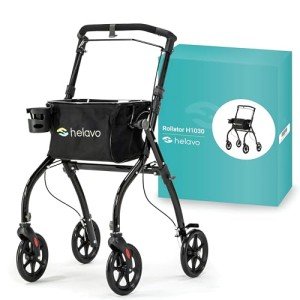10 Things You Learned In Kindergarden Which Will Aid You In Obtaining Reliable Walker

The Reliable Walker: Choosing the Right Mobility Aid for Your Needs
In an ever-evolving world where mobility challenges can develop for various reasons, a reliable walker can considerably boost an individual's lifestyle. Individuals looking for independence in their movement discover that a walker, often described as a walking aid, plays a vital role in their day-to-day activities, whether they are recuperating from surgical treatment, handling persistent pain, or experiencing age-related mobility issues.
In this blog post, we will go over the value of a reliable walker, the different types available, how to select the very best one for your requirements, and some regularly asked concerns.
Comprehending Walkers
Walkers are mobility devices that aid people with walking problems. They provide stability and support, helping to prevent falls and enhancing confidence when getting around.
Types of Walkers
There are several kinds of walkers readily available, and comprehending the distinctions can help you make an informed choice. Below is a table summing up the primary kinds of walkers.
| Kind of Walker | Description | Advantages | Downsides |
|---|---|---|---|
| Requirement Walker | A basic walker without wheels, requiring users to raise it to move. | Offers maximum stability; simple design. | Can be troublesome; less maneuverable. |
| Two-Wheeled Walker | Equipped with two wheels at the front for much easier motion. | Much easier to move; more lightweight. | Less stable than a standard walker. |
| Four-Wheeled Walker | A wheeled walker with four wheels, often with a seat and hand brakes. | Extremely maneuverable; suitable for outdoor use; stability with seating. | Requires some upper body strength to operate the brakes. |
| Rollator | A four-wheeled walker with a seat and storage area. | Suitable for longer ranges; comfortable seating option. | Less stability than basic walkers; can be more pricey. |
| Hemi Walker | Designed for those who can utilize only one hand or lower limb. | Helpful for one-handed support; lightweight. | Might not provide as much support as conventional alternatives. |
Key Factors to Consider When Choosing a Walker
Selecting the ideal walker is vital for safety and independence. Here are some key aspects to consider:
1. User's Physical Condition
- Assess the user's balance, strength, and series of movement. Some users might need more support and stability, while others may choose something lighter and more mobile.
2. Planned Use
- Think about where the walker will mainly be used-- inside, outdoors, or both. Walkers designed for outdoor usage typically feature bigger wheels.
3. Weight Capacity
- Guarantee that the walker can support the user's weight. Many walkers include weight capability specifications, generally varying from 250 to 500 pounds.
4. Adjustability
- Try to find a walker that can be changed in height to guarantee proper posture and convenience while walking.
5. Additional Features
- Lots of walkers included features such as brakes, seats, baskets, and even integrated lights. Assess which features are essential for the user's needs.
6. Aesthetics
- While performance is critical, numerous modern walkers are designed with aesthetics in mind. Pick one that the user feels good about utilizing.
The Benefits of a Reliable Walker
Using a reliable walker has numerous advantages, including:
- Increased Independence: Users can move around on their own without relying greatly on others for support.
- Improved Confidence: A stable walker provides users the security they need to move easily, reducing the fear of falling.
- Enhanced Stability: Walkers considerably improve balance, particularly for those with mobility disabilities.
- Enhanced Quality of Life: With improved mobility, users can engage more actively in social, leisure, and everyday activities.
Often Asked Questions (FAQ)
1. How do I know if I require a walker?
If you find walking to be challenging, experience frequent falls, have recently had surgical treatment, or have persistent conditions impacting your mobility, it may be time to think about a walker.
2. Can I use a walker on outdoor surfaces?
Yes, but think about getting a four-wheeled walker or a rollator developed particularly for outdoor surfaces, as they normally have larger wheels for much better maneuverability.
3. How can updated blog post change my walker for the very best fit?
A lot of walkers have height-adjustable legs. Stand in your shoes, and with your arms relaxed at your sides, the top of the walker should be at wrist level.
4. How do I keep my walker?
Frequently examine the walker for any loose screws or parts, make sure the wheels are moving efficiently, and tidy it regularly to keep its condition.
5. How can I build my confidence while using a walker?
Start utilizing the walker in familiar and safe environments. Slowly increase the complexity of your surroundings as you become more comfortable.
In conclusion, a reliable walker is not simply a mobility aid; it's a way to greater independence, safety, and enhanced quality of life. Understanding the types of walkers available and assessing personal requirements can assist individuals make informed choices. Whether it's a basic walker or a modern rollator, the right equipment promotes independence and confidence in mobility.
If you or a loved one faces mobility difficulties, think about investing in a walker that fulfills personal needs, boosts mobility, and eventually, improves everyday living. With the best choice, users can reclaim control of their motion, promoting a more active and fulfilling life.

